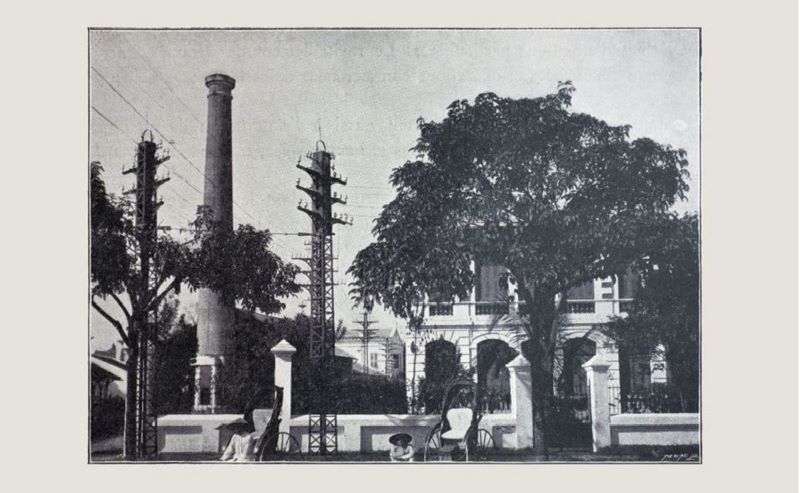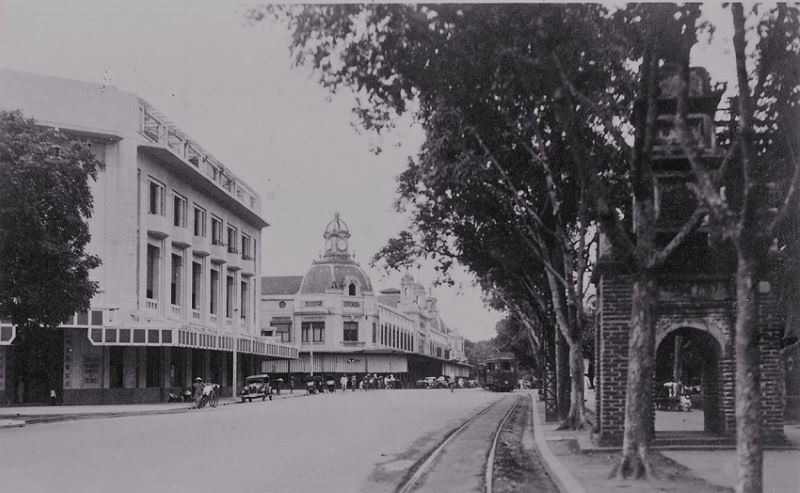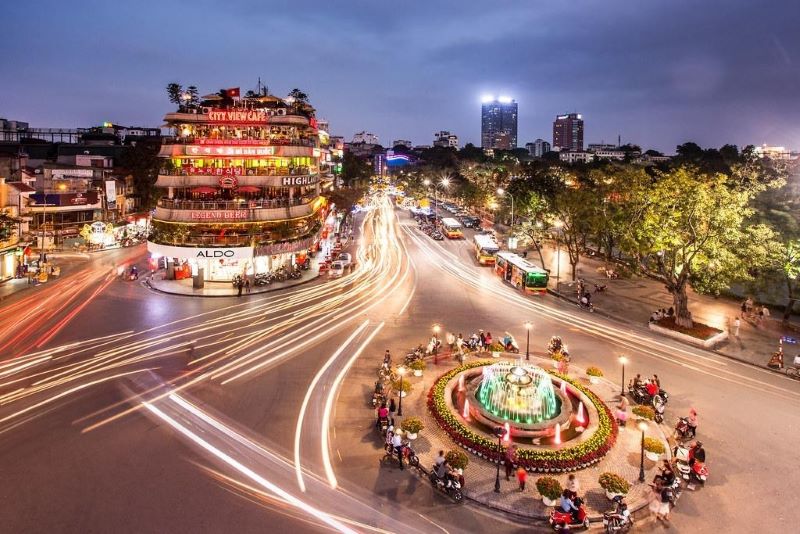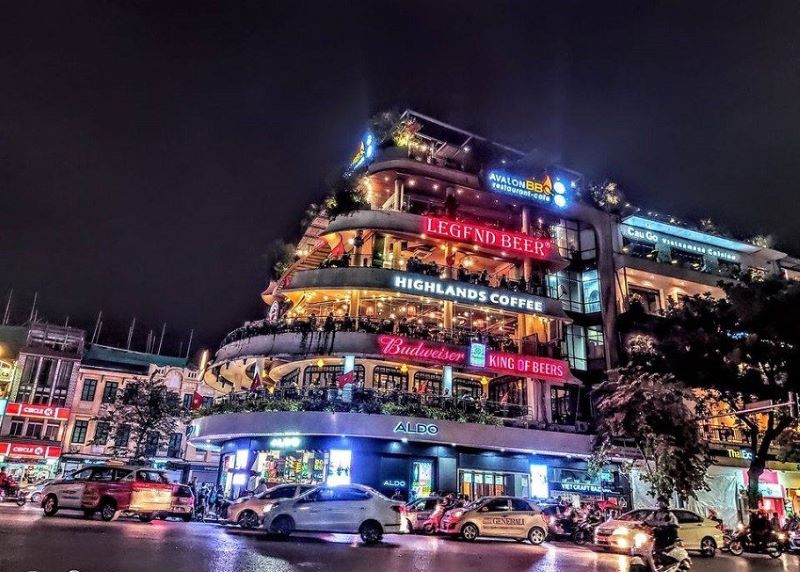Hanoi Electricity Corporation, situated on the picturesque shores of Hoan Kiem Lake, stands as a testament to Hanoi’s rich history and transformation. Over a century ago, the site was home to the Bo Ho Lamp Factory, Hanoi’s inaugural power plant, illuminating the city with its first electric lights during the late 19th century.
 |
| Bo Ho Lamp Factory in the 19th century. A glimpse into the past. |
From these humble beginnings, the factory has evolved into the esteemed Hanoi Electricity Corporation, a leading distributor of electricity across the nation. The corporation takes immense pride in its role as a dependable provider, powering the socio-economic policies of the Communist Party and the Vietnamese State. Ensuring a steady supply of electricity for Hanoi’s political, national security, cultural, and diplomatic activities, the corporation has become an integral part of the city’s infrastructure.
The Birth of Hanoi’s First Power Plant
Following the French invasion forces’ takeover of Hanoi in 1884, Senior Resident Bonal envisioned transforming the Sword Lake into the heart of a colonial city. This included reorganizing the iconic “36 streets” or the “Old Quarter” and constructing a Western-style neighborhood to its east and south. Understanding the importance of electricity, plans for a power station were set in motion.
On December 6, 1892, the Indochina Electrical Company broke ground for Hanoi’s first power plant on the site of the former Hotel de la Brigade, also known as Lu Gia Hotel, located on Francis Garnier Street, just east of Hoan Kiem Lake.
Over 132 years later, the address 69 Dinh Tien Hoang Street in Hanoi remains the headquarters of the Hanoi Electricity Corporation (EVN HANOI), a testament to the company’s longevity and significance.
 |
| A glimpse into the past: Today’s Dinh Tien Hoang Street, formerly known as Francis Garnier Street, holds a special place in Hanoi’s history. |
Given the significant financial investment required, the City provided the company with a substantial subsidy of 10,000 francs per year for a period of four years to support the construction project.
In his book, “Le Vieux Tonkin 1890-1894,” author Claude Borrin offers a fascinating insight into the Lunar New Year celebrations of 1894. De Lanessan, the Governor-General of French Indochina from 1891 to 1894, organized various games and festivities around Sword Lake to entertain the people of Hanoi.
With the oil-fired power plant nearing completion, Lanessan requested a test run of a generator set. The result was a spectacular display of a vertical beam of light shining brightly above the darkness of Sword Lake, leaving Hanoians in awe.
The plant became fully operational in early 1895, as recounted by De Lanessan in his book, “La colonization Francaise en Indochine”: “On January 5, 1895, the day before my departure, I witnessed the final test of the machinery; and a few days later, the electric lighting was in full operation.”
A Journey Through Time: The Story of ‘Bo Ho Lamp Factory’
 |
| Hoan Kiem Lake, a vibrant heart of Hanoi, captures the essence of the city’s rich history and modern vitality. Photo: Lucas Vu |
By 1897, Hanoi’s population had reached 30,000. With the initial capacity of the power plant being rather modest, electricity was primarily supplied to essential institutions and street lighting. This included the Mayor’s Hall, banks, post offices, the Palace of the Governor of Tonkin, and the private residences of officials, such as the Deputy Governor General (now the headquarters of Nhan Dan Newspaper).
The evolution of lamp posts is an interesting aspect of this story. Initially placed in the middle of the street, they were later relocated to the sidewalk to accommodate the introduction of automobiles in the city. The moment the lamps were illuminated with electricity, the power plant earned its endearing name, “Bo Ho Lamp Factory,” with “Bo Ho” translating to “lakeside.”
Prior to electric lighting, Hanoi’s streets were illuminated by kerosene lamps suspended from cast-iron poles. Each evening, dedicated workers would climb ladders to refill and light the lamps, only to extinguish them again at dawn. Some streets also experimented with carbide lamps, creating a broader light than kerosene lamps.
.jpg) |
| A historic snapshot: Bo Ho Lamp Factory, Hanoi’s first power plant, captured in a vintage photograph. |
According to the report “Situation de L’Indochine 1897-1901” by Governor General Paul Doumer, on January 1, 1897, Hanoi’s street lighting consisted of a combination of 55 carbide lamps, 584 kerosene lamps, and 523 electric lamps illuminating parts of the Old Quarter and suburban areas.
The design of the streetlight poles was both functional and aesthetically pleasing. Constructed from riveted diagonal iron rods, the base was wider than the top, with an overhanging iron rod to support a round light bulb. A circular hood protected the bulb from rainwater, showcasing attention to detail.
In the same report, Paul Doumer expressed his pride in the city’s accomplishments, stating that even the electric lights in many large cities in France would envy the capital of Tonkin.
As demand for electricity grew, two additional generating sets were installed to increase the plant’s capacity. However, it wasn’t until the turn of the 20th century that electricity began to be utilized more widely, primarily serving offices, hotels, the Grand Opera House, and the French civilian population residing near Hoan Kiem Lake.
The plant underwent a third capacity expansion to cater to the needs of the growing city, which had reached a population of 120,000. Interestingly, the trams in Hanoi were powered by a separate power station located at Place du Général Négrier, now known as the Shark Jaws building.
 |
| A historic landmark: The Shark’s Jaw building, formerly known as Place du Général Négrier, holds a unique place in Hanoi’s architectural heritage. Photo: Yeu Ha Noi Group |
In 1925, construction commenced on a coal-fired power station near the Yen Phu dyke, and by 1928, its two generator sets were operational, marking the closure of the Bo Ho Lamp Factory.
An intriguing historical detail is shared by historian Duong Trung Quoc, who reveals that Hanoi was not the first city in Vietnam to have electricity. Instead, that distinction belongs to Haiphong, which witnessed its first electric light in 1891. Hanoi followed suit a year later, thanks to the collaborative efforts between the Resident of Hanoi and the Indochina Electrical Company.
The introduction of electricity also left its mark on the Vietnamese language, giving rise to colorful slang expressions. One such example is the term ‘nha que’ or ‘bumpkin,’ which originated not from Ly Toet’s caricature in the 1930s but rather from the late 19th century, when power stations in Hanoi and Haiphong brought electricity and tap water to urban areas, a luxury not yet available in rural regions.
Unique activities celebrate 20th anniversary of Hanoi’s ‘City for Peace’ title
NDO – A grand ceremony and a street carnival, themed ‘A peaceful heart’, were held at the Ly Thai To flower park in Hanoi on July 13 to celebrate the 20th anniversary of the city’s recognition as ‘City for Peace’ by the United Nations Educational, Scientific and Cultural Organisation (UNESCO) (July 16, 1999 – 2019).
Hanoi Nightlife
Hanoi’s nightlife scene offers a multitude of interesting things to see and places to go well after the sun sets. The city’s lively bars and glitzy nightclubs are conveniently set around Hoan Kiem Lake in the Old Quarter, where you can enjoy great tunes and all sorts of booze as well as mix and mingle with fun-loving locals and expats. However, a night out in Hanoi is not complete without sitting back on plastic stools and enjoy bia hoi (Vietnamese draft beer) along the bustling streets. Due to the Hanoi’s rather strict laws, nightclubs and bars usually close at midnight, but you can find some that remain open (and busy) until the local authorities show up. Read on to find out what to do at night in Hanoi.








